It is the first afternoon of 2016 and I’m standing in the tidal zone of a very beautiful place – Boundary Bay, which sits on the border between Canada and the United States on the north western coastline of North America. The bay extends into both countries – geology doesn’t care about our version of the World – or it didn’t the other evening when a magnitude 4.2 earth tremour spilled piles of books and pictures across my home office floor.
There is something very special about the tidal zone, it is one of only a few natural environments that our species has trouble residing in; and where we think this absolutely necessary we will dump huge amounts of concrete onto the foreshore and re-inforce any structure against the power of the sea. In simple terms, it is difficult to live in tidal areas on the cheap. Often we will build at the top of the beach, or on the cliffs above, and sometimes that doesn’t work out so well. These are environments that are ever-changing and more often than not, best left to nature.
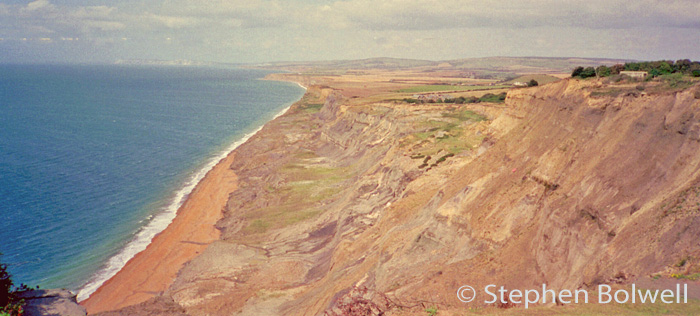
We commonly pollute such places, often in the hope that the sea will just wash it all away – which it usually does… but then the mess just shows up somewhere else, unless it is chemical waste (run off from agricultural areas for example), in which case we may not even see it. For as long as I can remember, natural places seem almost incomplete without a lump of polystyrene, a collection of plastic bags and maybe an old fridge – or that’s what you’d think if you suddenly arrived here from Mars.
When I lived in Southern England we knew exactly where to dump our rubbish because local councils made a lawn and planted daffodils as a sign of loveliness, while anything that looked the least bit natural appeared to be giving a clear signal that dumping was O.K., or at least that’s the way many places in Britain were beginning to look when I left in 2002. Hopefully things are changing.
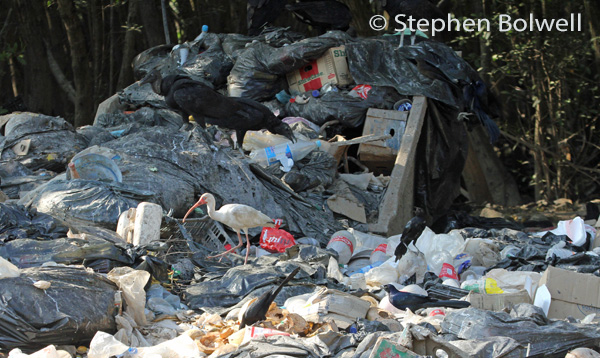
When in Malaysia in the early 1980s I decided to spend a night on a desert island with only the bare essentials – in those days a girlfriend, a box of matches, a bottle of water, and a camera (top of the list was always chocolate, but in the tropics this just melts). The boatman considered it essential to take us to one tidal zone in particular to see houses on stilts; and I’d like to think this the exception that proves the rule – ‘you really can’t build in such places on the cheap’, but I’ve seen low tech accomodation like this elsewhere, and when a big storm arrives, this becomes a very temporary form of housing; between the tides really isn’t the best place for us to undertake longterm living.
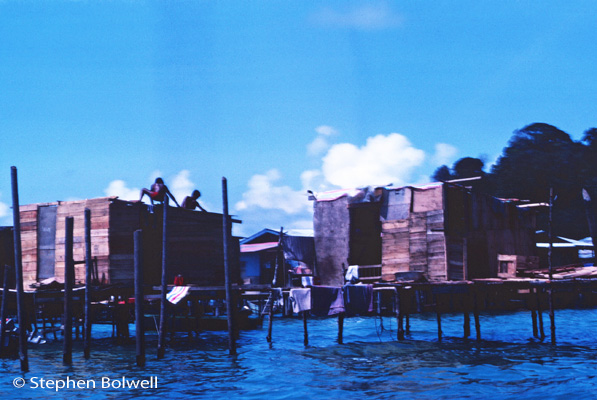
Back to the present and I’m enjoying beautiful British Columbia as I stand on Crescent Beach. My wife is taking a walk along the coastal path, which gives me less than an hour to grab a few pictures of birds feeding on a rising tide before she returns. The problem is, this is a sunny New Year’s Day and the whole place is remininiscent of a bubbling ants nest of activity – there are people just about everywhere, but despite this I’m seeing lots of birds and that’s a surprise.
The birds here seem to have a certain indifference to people, possibly because of the pay off – there’s plenty of food – and I don’t mean chips and leftover sandwiches – a great deal of naturally available food is on offer and I think there are good reasons for this.
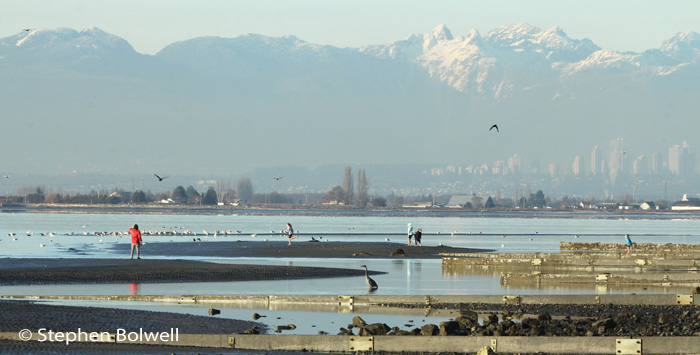
It is common in Southern B.C. to see warnings about collecting shellfish from coastal areas, although some people continue to do so illegally, Lower Mainland beaches haven’t been over harvested, not because anybody is worried about the birds getting enough to eat, but because there has been a ban on harvesting shellfish in the region for more than 40 years. Local waters are contaminated with bacteria from human and animal sewage, and there is also an assortment of toxins from motor oil, pesticides and fertilisers. This is a real concern – if you fancy a dose of salmonella or hepatitis, eating shellfish from this area should go right to the top of your ‘to do’ list. Essentially we don’t eat what the sea has on offer here for one very good reason… it might kill us. The birds however can’t read the warning signs and feast on shellfish and other small creatures that are readily available in the tidal zone because we leave them alone.
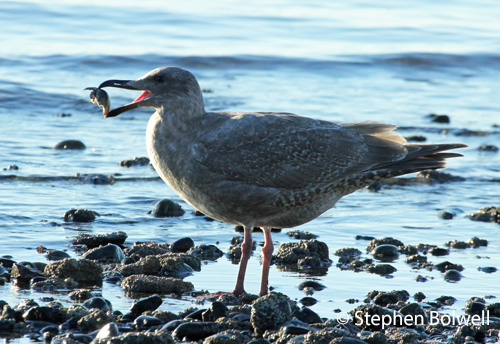
And it isn’t just the Lower Mainland, there are many areas along the B.C. coastline with restrictions on shellfish harvesting.
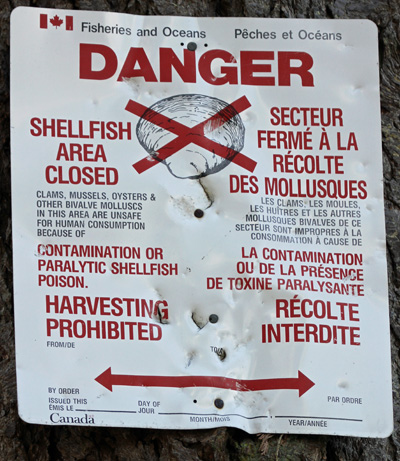
This was the first of many warning signs dotted along the coast that I noticed after moving to the region nearly six years ago, it was on a beach close to Victoria (the capital of British Colombia) which is located on Vancouver Island. This warning was a real surprise – I naively thought that this place couldn’t be anything other than pristine… An important city where government sits that doesn’t have sewage treatment seemed very unlikely to me, especially because the province trades on its natural beauty – I mean it’s written on our number plates.
The City’s dumping of raw sewage and the run off from pesticides into the sea without appropriate treatment isn’t something that most locals go on about, but one of them did… and to me. Well, obviously this fool was mistaken. I mean who in their right mind would allow that to happen in one of the most impressive natural environments on Earth? After all, this isn’t a ‘developing’ or what we used to call a ‘third world’ country – this is Canada, and that really couldn’t happen here?

During the warm summer of 2015 there were also warning notices posted around the Bay about ‘swimmers itch’. This condition is due to the presence of parasitic schistosomes concentrated in the water which is a nuisance to bathers. In the tropics there is another more dangerous form ‘schistosomiasis’ or ‘bilharzia’which is a serious threat to people, but the tiny parasites that occurs here are little more than a nuisance. When the weather is hot their numbers increase and they burrow into the skin of seabirds (their natural host). When they burrow into the skin of humans (the wrong host), they die but will sometimes cause irritation – an itching of the skin. People are therefore disinclined to go into the water during the summer months and in winter, when the water is clear, it is just too cold to bother. The presence of this parasite is another factor in reducing human disturbance to shore birds and they have quickly taken advantage of the situation.
A combination of food availability and less disturbance provides a more user-friendly if not cleaner environment for marine birds in this otherwise developing area. The tidal zone has become at least one natural environment where wildlife and humans live in close proximity without disastrous consequences, and that at least is encouraging.
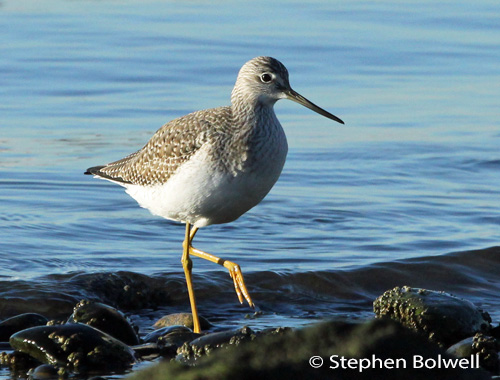
When I was younger my earliest attempts at filming waders was from a toilet tent staked out above the water line in the tidal zone. I’d rig it before the birds arrived and then get in and wait for the water to rise. This would provide about 20 minutes of ‘waders feeding closely’ time on the incoming tide without the birds being aware of my presence; then as I got flooded out – there would be a slight disturbance as I moved my gear out and saved the tent from the waves, but my retreat was only a brief inconvenience and the birds would soon return to feed.
I later graduated to a hide or blind as it is sometimes called, but I always thought the waterproofing of the toilet tent gave it the edge, even though if it returned to its original use, I’d cut holes in inconvenient places. I once spent several days filming from a floating hide in Cornwall, a one off metal construction that had been made and positioned way down into the tidal zone, but once in place there was no possibility of getting out until the tide had run a full cycle and you’d have to sit it out, no matter the weather, until the water receded.
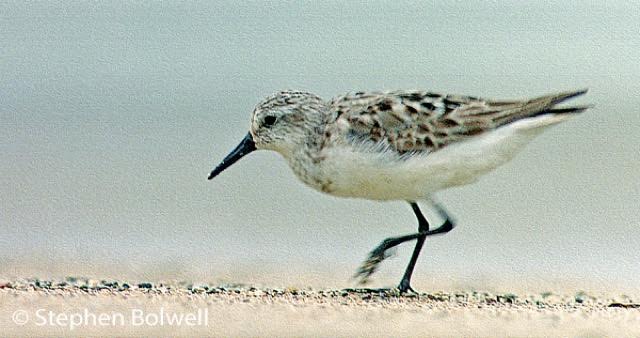
My preferred choice is not to use a hide at all but rather to repeatedly return to an area, wearing similar clothes and a hat which usually singles me out from other people. I wear nothing camouflaged as I am not overtly hiding and hang out at a distance until the local birds begin to ignore me; usually I allow them to approach me rather than the other way around. This is a good technique for many animals, but there are always some that it is impossible to get close to without a hide. Some species of birds (on the nest) will desert their eggs or offspring with very little provocation and it is wise to be careful when videoing or photographing any creature and adhere to any legal requirements. Professional photographers on a tight schedule will often hide away in a tent because the stand and wait technique in full view can require a lot of time and patience, although in busy public places where the passage of people is constant the opposite may also be the case.
Photographing waders in particular, by standing out in the open can be very tricky because they live in open environments – just standing next to a bush can make a difference, but there is no chance of that out on a beach and most birds will avoid coming too close if you are an unfamiliar form, or if they have previously been shot at – long lenses and guns have a certain similarity, although most birds can tell the difference. Certainly none of the birds are twitchy today, nothing is bothering them – there is plenty of food to be had and they are just getting on with it.

The most interesting thing is that I can see what they are eating – a variety of small invertebrates, the one on the left has a little crab in its beak; a camera often allows you to catch what you might otherwise miss during a rapid capture, manipulate and swallow. Presently, there are many hundreds of dunlin feeding here in discreet flocks, sometimes as few as a dozen but in many cases in far greater numbers. Across the whole bay area there will be many thousands of dunlin overwintering or passing through.
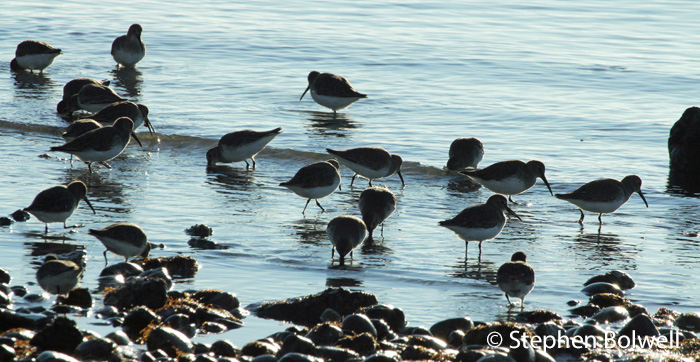
These birds are really well camouflaged once they are amongst the rocks, with heads down their curved backs and disruptive colouration give the impression (from a distance), that they are just part of the shoreline.
The biggest problem I usually have when working with waders is dog walkers – the ones who permanently have their dogs off of the lead. They know their dog won’t harm the birds, but forget that every five minutes there will be another enthusiastic dog charging into the water. Taking flight is one of the most efficient burners of energy that a bird can undertake and that’s really bad news on a cold day – essentially waders are feeding through small windows of opportunity usually on a rising tide, taking advantage of prey emerging from places of hiding as water flows around them. The birds need to use their time efficiently and being chased by dogs isn’t very helpful.
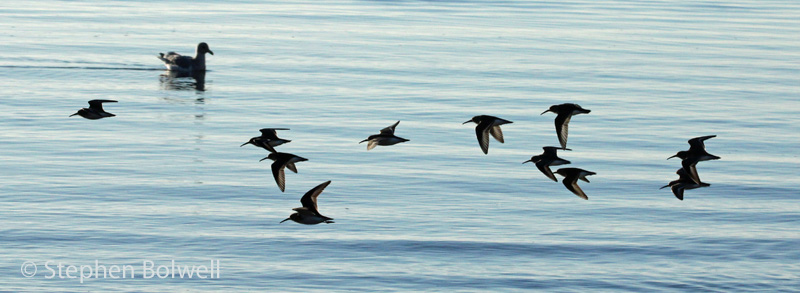
If we more easily recognised the feeding regimes that waders are programmed to use and acted accordingly, these birds might be even more tolerant of our presence. We are no longer completely wrapped up in the primitive mindset of can we eat it and how should we cook it? Many of us just like watching birds. Prior to the mid-20th Century, natural science was primarily concerned with the collection and identification of specimens – certainly a necessary phase in our understanding, and then ecology, conservation and animal behaviour were in their infancy. There is no doubt that we have come a long way in a very short space of time. Sadly, the main threat to wildlife today lies in our increasing numbers, this causes problems that range from pollution to habitat destruction with human disturbance the predominant feature along coastlines.
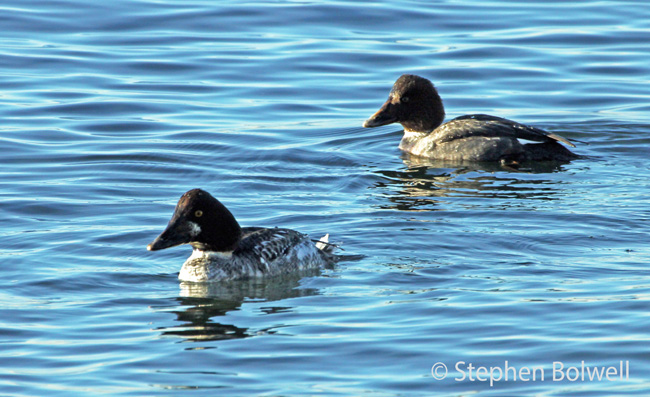
Today however is an exceptional day – most people have their dogs under control and none of the children are actively chasing the birds, which is mostly how it is in Canada where people are defined by their considerate and tolerant natures. Ignorance is always the enemy and it takes only a small percentage of people not thinking straight to cause unnecessary disturbance to wildlife.
What a beautifully still and sunny afternoon the first day of January 2016 provided for photographing the waders on this agreeable stretch of coastline and a good deal easier than my woodland woes of yesterday (see previous post – Into the Woods). Every outing into the natural world is different and that’s what keeps it interesting. The more you learn, the more you discover there is to learn; and once in a while you discover things that make it difficult to remain upbeat and optimistic.
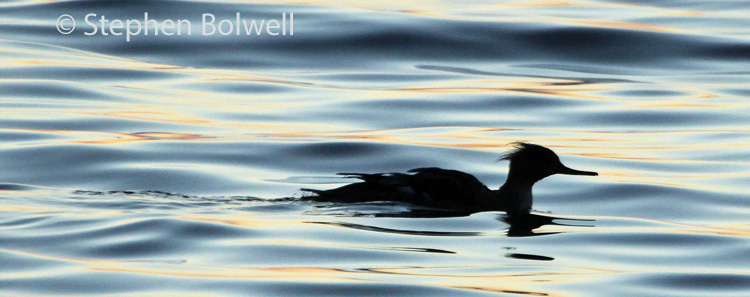
In the act of taking a picture you become witness to future change, and if at some stage southern British Columbia cleans up its act and people once again harvest the tidal zone and re-set the ecological balance, it would be ironic if this ended up as just another way of competing with the birds.
With thanks to John Gordon and Chris Packham for advice on bird identification, although if mistakes have been made they are entirely my own, and neither John nor Chris can they be held responsible for the views expressed above.
Their Websites:
www.johngordonphotography.com/
www.chrispackham.co.uk/
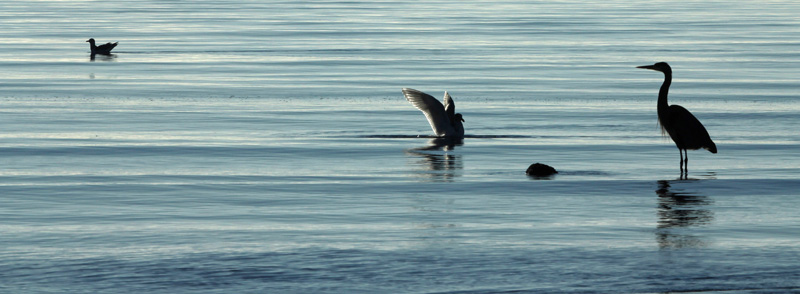
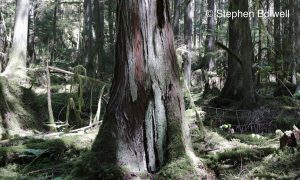
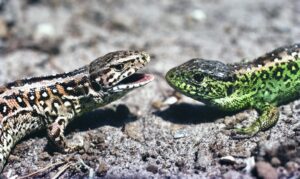
Really enjoyed all your latest work, much more informative and entertaining than most things I read.
Thanks for the kind comment. It is much appreciated,
Stephen.